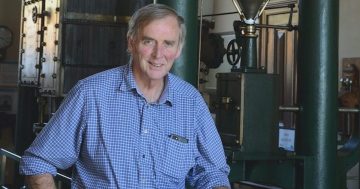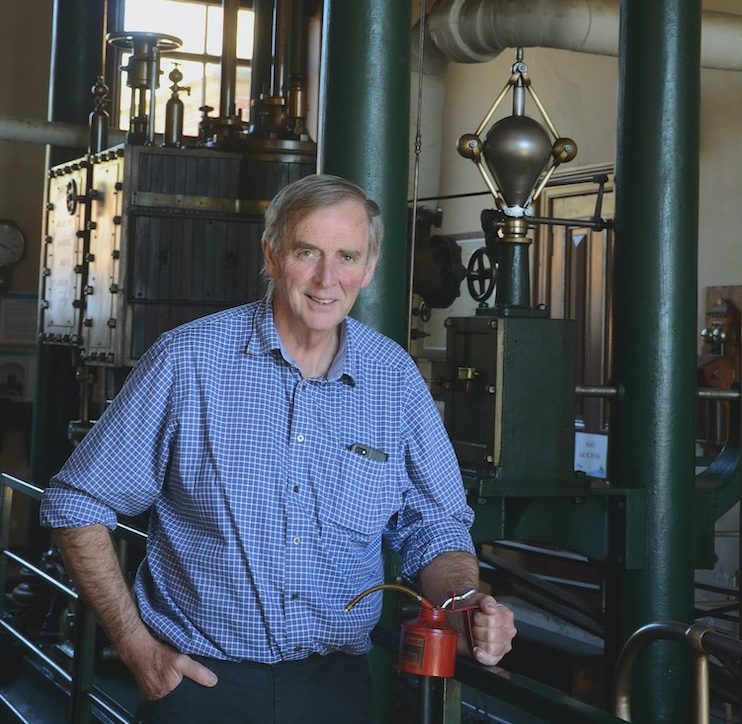
Ken Ainsworth with Goulburn Historic Waterworks Museum’s Appleby beam engine. Photo: Leon Oberg.
You would expect the steam engines inside Goulburn Historic Waterworks Museum to draw water for their boiler from nearby Marsden Weir. But the water lies within the Sydney catchment, belongs to WaterNSW and flows straight past the museum’s famous Appleby beam engine.
The engine once pumped 145,800 litres an hour from the weir to supply Goulburn residents. Research shows that by 1883, the pumphouse was well underway with some installations complete, including its machinery and fireman’s cottage.
The waterworks was extended in 1897, and a Blake duplex steam pump was installed sometime after. This engine would have operated with the Appleby as a supplementary engine until 1918 when electric-driven pumps were installed.
Then the Appleby was mothballed.
The waterworks supplied water to the region until 1977, when a new pumping station was commissioned near Rossi Weir. The original pumphouse which provided Goulburn’s first reticulated water fell silent.
While Goulburn has lost numerous heritage assets in recent times, the Goulburn Historic Waterworks Museum is an outstanding exception. Once facing an uncertain future, today it has professional oversight which enables the steam engines to periodically operate for public entertainment.
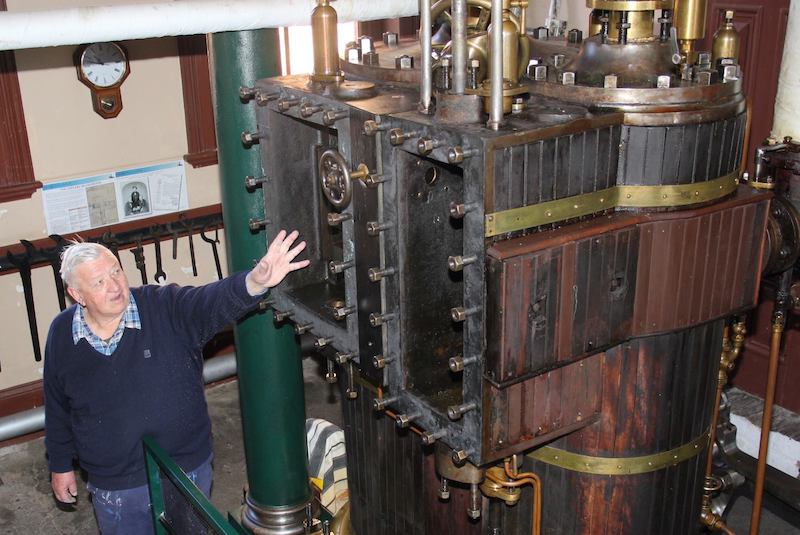
Goulburn Historic Waterworks Museum’s longest-serving volunteer Tom Marmont was recently acknowledged for 20 years of service. Photo: Goulburn Mulwaree Council.
Several years ago, Goulburn Mulwaree Council engaged Ken Ainsworth, who runs a specialist engineering company, to run the museum’s two engines, the Appleby and the Hick Hargreaves.
Ken has maintained a strong interest in industrial engineering since acquiring his skills almost 50 years ago from ex-shipyard engineers from Scotland. As well as overseeing the operation of the historic steam engines, he provides other services voluntarily.
He says the engines’ pattern of operation these days is aimed at protecting their longevity.
Ken says the Appleby engine has several rare qualities.
“It was built virtually right at the end of the steam engine era and has all of the developments from the previous 150-odd years,” he says. “It has everything combined in the one engine.”
Ken believes the Appleby will keep going for many years.
“Maintenance on it is very low,” he says. “We are operating it now on a pattern that protects the engine. We take a lot more care to maintain its longevity.
“The council has put the maintenance and care of it under my control, and nothing happens to the Appleby and Hicks Hargreaves engines without my approval.
“There are a few Appleby engines around the world, but very few in their original location. The [Goulburn] Appleby is the only one in the southern hemisphere in its original establishment in complete assembly.”
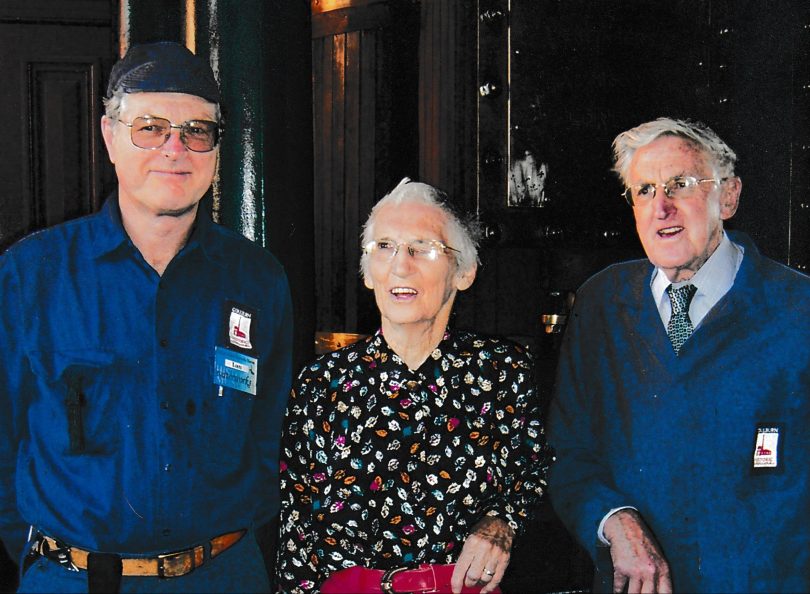
Goulburn Historic Waterworks Museum volunteer Ian McCormack with Sydney engineer Bruce Macdonald and his wife, Dot, taken in October 2008 in the Appleby engine room. In 1957, Bruce persuaded council to let him restore the engine instead of scrapping it. Photo: Supplied.
People come from around the world to see it working away by the river.
“You could not wish for a better place – it’s a lovely spot,” says Ken.
He is pleased the volunteers who maintain the site, guide tours, clean the engines and help him on operating days are adding to their skills.
Museums officer Julianne Salway says the number of visitors from around Australia peaks during the Steampunk Victoriana Fair in October each year.
Steaming days in March, April, May and September are also popular.
Beyond the steaming days and steampunk festival, council is looking at other potential events.
“We are working on developing a public program for the waterworks, which may include education, youth and family programs,” she says.
“[We are looking at] a hands-on maker market/workshop [one has already been held successfully], environmental programs with a focus on our waterways, and an exhibition program focusing on the history and people of the waterworks.”
Julianne has also been the waterworks’ volunteer coordinator since 2009. She says she works with amazing, skilled and dedicated volunteers.
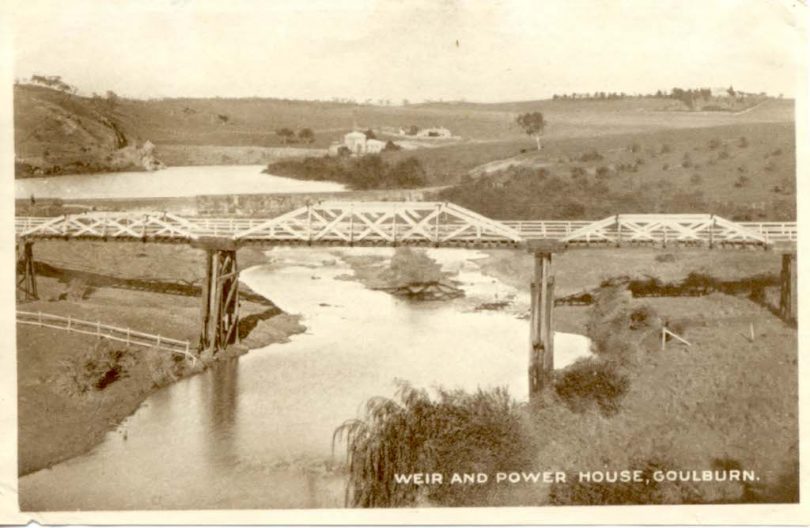
A 1901 photo showing an older bridge and the Goulburn Waterworks on the rear left of the river. Photo: Goulburn Mulwaree Council.
Drawn by his interest in history and steam, volunteer John Taylor says he enjoys working in a beautiful environment and being involved on steaming days.
“It wouldn’t be the same if the engines were just a static display,” he says.
Ian McCormack has been volunteering at the museum for 15 years. A skilled maintenance engineer, he completed his fitter and turner’s apprenticeship at the Aberthaw Power Station in South Wales from 1959 to 1964.
However, the steam engines at the museum are vastly different to the high-pressure operations in his day.
A museum attendant for more than 10 years, Kathy Rowe is often asked where the water comes from, what fuel was originally used in the boilers, the weight of its big flywheel, and meaning of other strange terms such as tallow and white lead.
These days town water is used for the boiler.
Original Article published by John Thistleton on The RiotACT.







